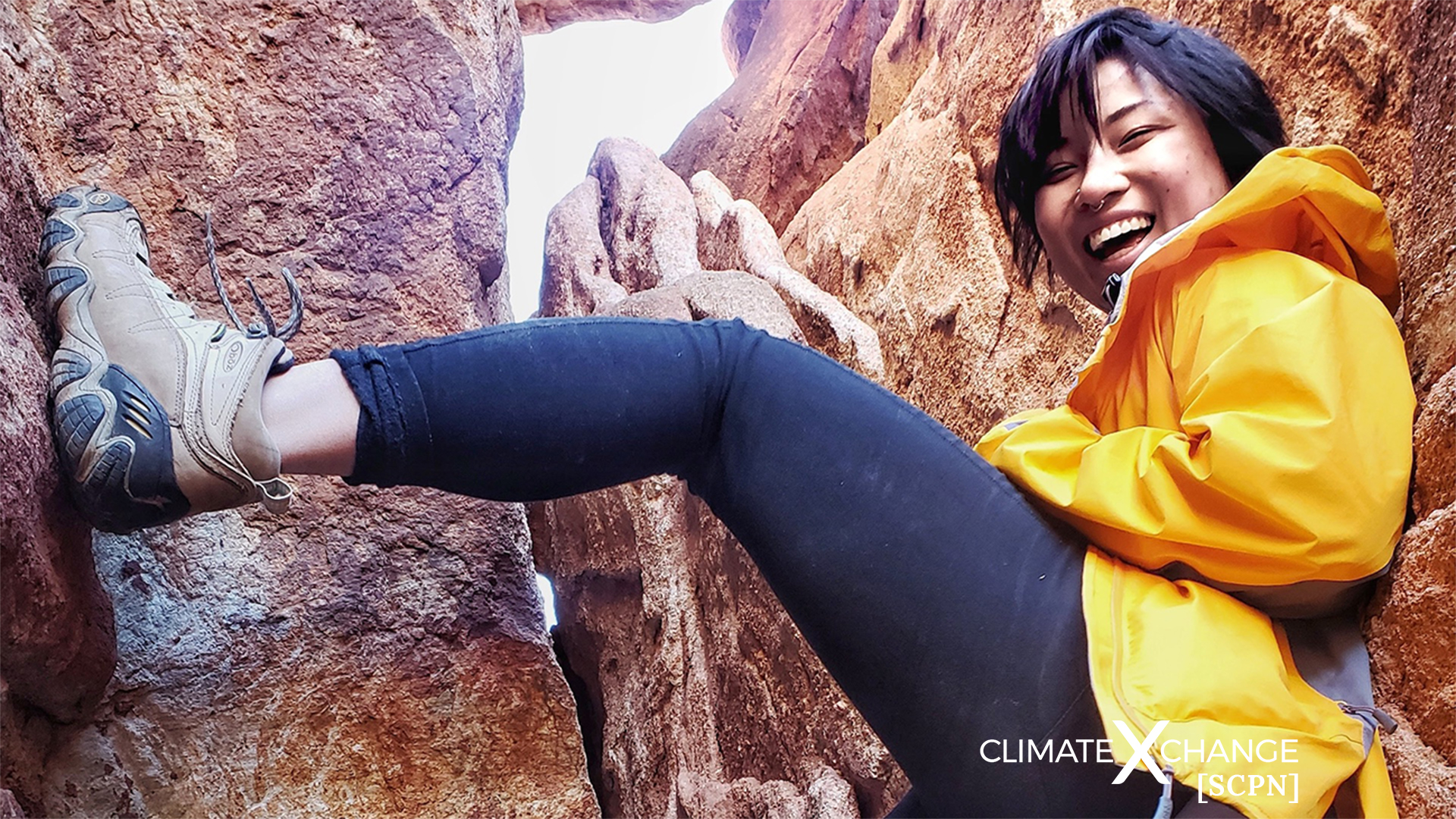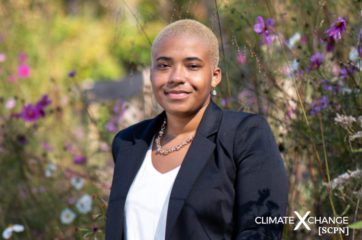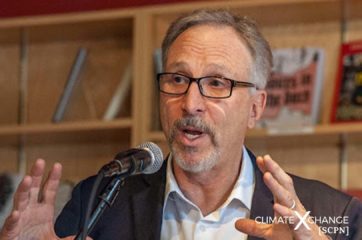All across the country, members of our State Carbon Pricing Network (SCPN) are fighting to make an impact on climate change in their communities. We have individuals in our Network from all 50 states, each experiencing climate change differently in their local areas and finding unique solutions to build resiliency efforts.
Shelley is a 2018 Princeton University graduate, who studied computer science. Originally from Philadelphia, she currently works in Denver as a business analyst. Shelley conducts research for political strategy and serves as a carbon policy liaison for the New Jersey Student Climate Advocates, a coalition of high school, college, and graduate students working to pass a common-sense policy to cut pollution and make New Jersey a leader in the clean economy. She’s also been actively engaged in the SCPN, working to ensure the group’s carbon pricing policy is equitable and just.
Noa Dalzell
Shelley, thanks so much for taking the time today. You’ve been an actively engaged member of the network since I joined the team a few years ago and I’d love to spend some time learning a little bit more about what brought you into this work to begin with.
Shelley Zhao
Ever since I was a kid, I was involved in a lot of environmental efforts, even in my high school and middle school days. I grew up knowing that climate change was this big, existential threat, and I realized early on I wanted to do something concrete about it. But I didn’t know how to make a dent in such a huge, intractable problem. When I was in my senior year of college, I met Jonathan Lu, who is the director of the New Jersey Student Climate Advocates, and he introduced me to this carbon fee-and-dividend policy group that he had been working on.
At that point, we didn’t have a bill draft or anything, but we had actually put out a white paper about the potential for carbon fee and dividend in New Jersey, and we were in a preliminary research phase. I thought, hey, this is a pretty great opportunity to actually make a difference. I liked the fact that it was all students working on this; we didn’t have any funding, we weren’t backed by a nonprofit, we were just this pretty scrappy group working together.
Noa Dalzell
So, given that you have graduated and are no longer living in New Jersey, why did you decide to stay so involved with this group and committed to the cause of pricing carbon in New Jersey?
Shelley Zhao
I’m currently a business analyst for a small equipment financing company out in Denver, and so it has been somewhat of a challenge to remain committed to NJSCA while working a regular nine-to-five job, and also have a life outside of work. But, given the amount of time I have invested in the group, and the amazing work and inspiring students that current students in the group have shared, I’m committed to staying on.
Being student-led can be a challenge; most students don’t have as well-defined an understanding of how the professional world works and how you reach out to groups and establish working relationships, and how you collaborate on a project as big as this. On the other hand, that inexperience is far outweighed by the passion and enthusiasm that students have shown within their work, and the level of commitment even when students initially join and don’t know a lot about carbon pricing. They’re not getting paid nor are they being rewarded in any external way. When we reach out to groups and introduce ourselves as a scrappy student group with no funding, people are very moved by that story. People generally trust students because we’re not in it for anything else other than trying to do some good in the world.
Noa Dalzell
Previously, when we’ve talked through policy design, equity provisions and the transformative potential of this policy has come up quite a bit. How have you ensured that equity remains at the forefront of the policy, and that vulnerable communities come out ahead?
Shelley Zhao
There was a pretty dramatic shift last year when equity really took center stage in the larger climate community. Being involved in the SCPN, and being able to hear those conversations play out in monthly calls and programming has been huge. I distinctly remember the webinar on environmental justice with Michelle Romero that the SCPN hosted last year, which kind of hit home for me that this is a really important issue that we, firstly, need to truly understand, and secondly, take seriously into consideration.
We are always working to establish trust with the environmental justice groups in the state. It’s important that we don’t just put equity into the bill because it looks good, but because we have a duty to ensure that a climate policy like ours guarantees that the people most impacted by the crisis, and also contribute the least, are getting justice. We have an environmental justice breakout group that works specifically on ensuring that equity is built into our policy from the ground up.
I personally feel like I have been a big pusher of this within the group, sometimes I have come into conflict with some of the more centrist members of the group who are concerned about market principles and letting demand move the climate needle. But, as a group, we have been moving toward the direction of ensuring equity is a focal point of the bill.
Noa Dalzell
I appreciate you sharing that, because this is a dynamic that plays out in policy design quite a bit in my experience. I’ve seen many advocates struggle between prioritizing equity and justice because it is the only right thing to do, but also wanting to appeal to conservatives and industry groups by emphasizing how this can be a free-market policy. I think this is part of what makes this work so difficult, so it’s very impressive that a student group has worked through these difficult conversations. How do you all ultimately define success?
Shelley Zhao
The ultimate goal is to get the bill passed — that is the undeniable goal. But, there are a lot of steps between getting there and where we are now. The bill hasn’t been introduced yet. But, there are a lot of factors that will determine whether or not the bill passes; some are in our control and some are not. Along the way, some big milestones are building relationships with other climate activists, with the general public. Even just having a bill draft and having that be introduced in the legislature and seriously considered by policymakers and the larger environmental community is a success. Even something like our relationship with Climate XChange, where as the representative of a student group I’m invited to a monthly call alongside other state-level carbon pricing groups — those are all smaller goal posts along the way. Having students gain a better understanding of what it means to do something really concrete, and see that their work has an impact, that’s an important goal post as well.
Noa Dalzell
Have you guys directly coordinated with other student groups working on carbon pricing policy design?
Shelley Zhao
We have specific communications and contacts with a number of groups, like the Yale-based Students for Carbon Dividends, who are proponents for the fee and dividend model. There are two flavors of student climate groups. There’s the Sunrise Movement, who is really trying to move the needle toward a more progressive stance, and just generally trying to reimagine and re-envision the entire picture of what climate change legislation could look like in the US. That’s a very valuable part of the climate movement. They are kind of the visionaries, and they kind of show people what this world could be like, whereas our group attracts the people who are a little more interested in the policy implementation that follows that visionary thinking. How can we actually realize that dream? I support Sunrise wholeheartedly, and we have a lot of students in our groups who are also Sunrise activists.
Then, there are groups like us. People are not excited by bill details, they’re not excited about bill language. They’re excited by you telling them what this world could be like and what is possible. Once you show people the vision, then you need to give them the steps on what to do next. We are the more concrete, less exciting, less sexy step in this process.
Noa Dalzell
Shelley, thanks so much for your time, it’s been great to learn more about you and your group’s work, and to have you so engaged in the network. Is there anything else you would like to add?
Shelley Zhao
A lot of people have been terrified by the looming threat of climate change; they may be paralyzed and scared of what this will mean for their future, for the future of their children, the future of their children’s children, and for the fate of the human species. I relate to those concerns, but doing your research and seeing the movements that are growing, these sorts of trends have really shown us that change is possible. People are beginning to realize that this is a real problem and that we need to do something about it, so if you’re worried about climate change and really want to do something about it, I’d urge people to look into their local carbon legislation groups and see which policies they can advocate for. There are so many different steps that you can take depending on how much you are willing to commit and invest, but there is hope. It’s just going to require all of us working together and looking for a solution. Don’t give up.









